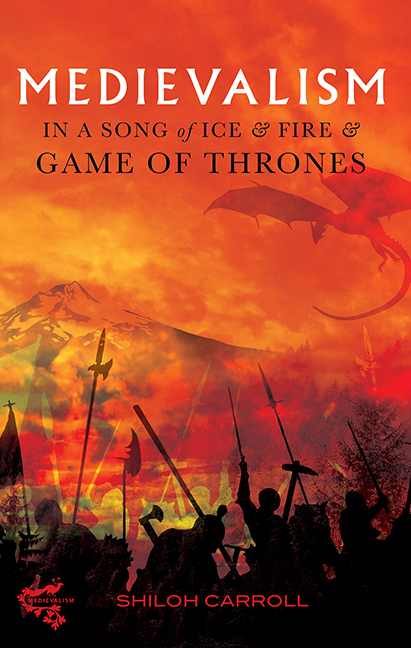Book contents
- Frontmatter
- Contents
- Acknowledgements
- Author's Note
- Introduction: Martin and Medievalist Fantasy
- 1 Chivalric Romance and Anti-Romance
- 2 Masculinity, Femininity, and Gender Relations
- 3 Sex and Sexuality
- 4 Postcolonialism, Slavery, and the Great White Hope
- 5 Adaptation and Reception
- Afterword: “Fantasy for people who hate fantasy”
- Bibliography
- Index
- Medievalism
2 - Masculinity, Femininity, and Gender Relations
Published online by Cambridge University Press: 09 October 2019
- Frontmatter
- Contents
- Acknowledgements
- Author's Note
- Introduction: Martin and Medievalist Fantasy
- 1 Chivalric Romance and Anti-Romance
- 2 Masculinity, Femininity, and Gender Relations
- 3 Sex and Sexuality
- 4 Postcolonialism, Slavery, and the Great White Hope
- 5 Adaptation and Reception
- Afterword: “Fantasy for people who hate fantasy”
- Bibliography
- Index
- Medievalism
Summary
TODAY, AN UNDERSTANDING of the gender dynamics and gender roles of the Middle Ages generally stems from a confluence of several literary and historical streams: anti-feminist treatises from the Middle Ages, medieval romance, medievalist fiction from writers such as Tolkien and Tennyson, and even scholarship on the Middle Ages and medieval romance. As discussed in the introduction, whether the perception of gender in the Middle Ages as portrayed in medievalist fantasy is “correct” or not is secondary to understanding what that perception is and how it developed, as well as how writers such as Martin approach, use, and/or reject that perception.
Various uses of medievalism – both social and literary – indicate that the general beliefs about gender roles in the Middle Ages favor strong, warrior men and submissive, chaste women, with the occasional warrior woman allowed. Michael Drout believes some of this impression may have been inspired by Tolkien, whose Middle-Earth includes very few women and largely eschews all forms of reproduction. Drout claims that students new to medieval studies might be surprised by the visibility of women in medieval literature and history, even viewing the idea of gender as an “intrusion” on their preconceived notions of the Middle Ages. This observation generalizes to a larger point about the role of men in constructing the Middle Ages – for the most part, medieval writers were men, medieval historians were men, and early medieval scholars were men – in that the portrayal and construction of gender is one-sided. Nancy Partner reminds us that many of the medieval women available for study are fictitious, invented by men for male interests, and that medieval studies has traditionally been “men studying men.”
Since Martin is writing epic fantasy set in a medievalist world, especially one that is strongly influenced by medieval romance and attempts to avoid high fantasy's tendency toward simple morality and an innocent Middle Ages, gender issues are, of course, complicated in A Song of Ice and Fire. As with the structures and narrative discussed in the previous chapter, Martin's handling of gender issues also shows strong influences from medieval romance – again, the original romances and not the Victorian or Pre-Raphaelite reconstruction of them. Moreover, Martin not only reconstructs the gender dynamics of medieval romance, but also considers the implications of these dynamics on society in general and his characters in particular – men as well as women.
- Type
- Chapter
- Information
- Publisher: Boydell & BrewerPrint publication year: 2018

